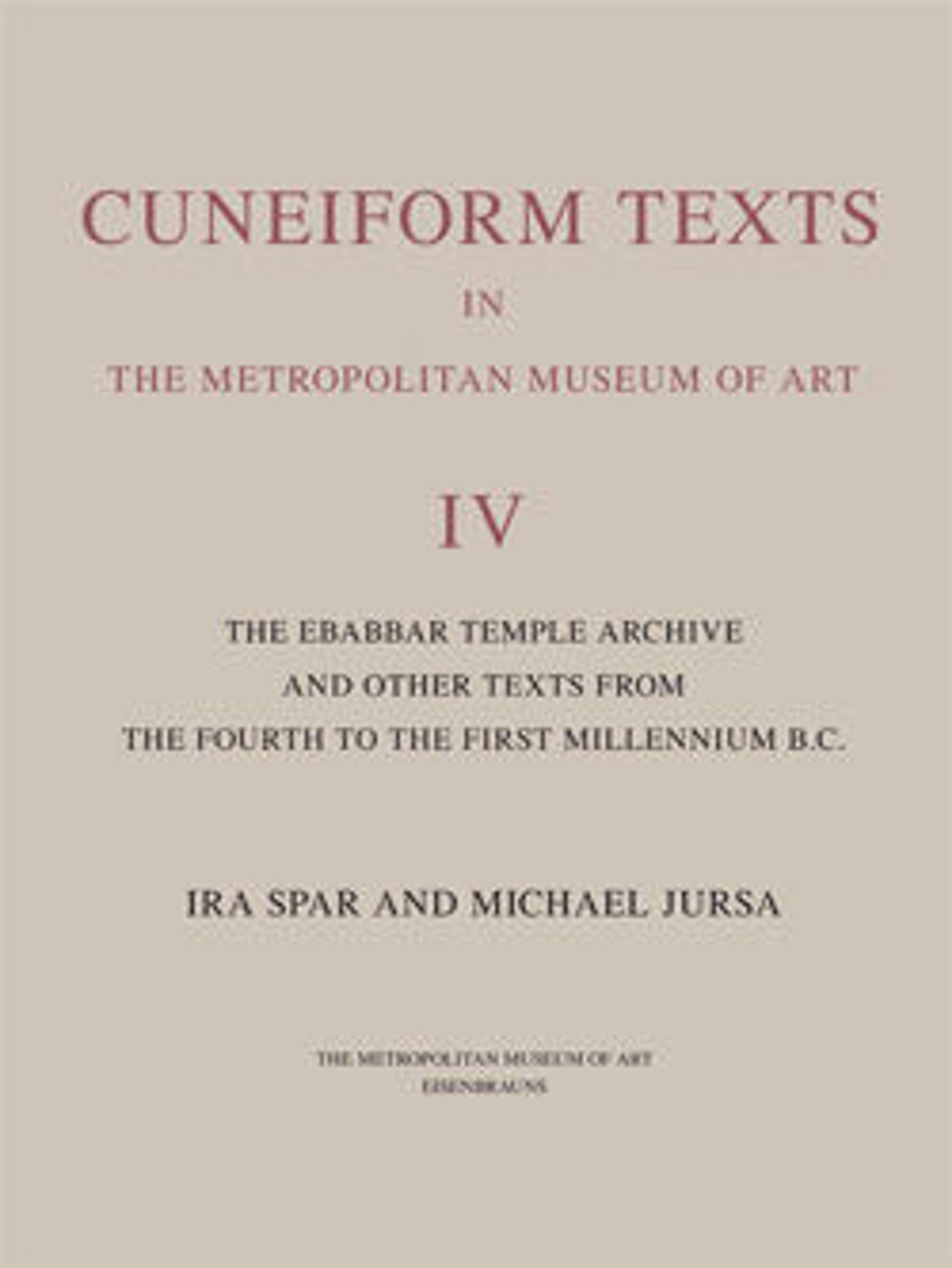Cuneiform tablet: Sumerian dedicatory(?) inscription from Ekur, the temple of the god Enlil
The city of Nippur, home to the chief god Enlil, was an important religious center in Mesopotamia. Rulers seeking the favor of Enlil visited the city to make offerings to the god, and contributed to the refurbishment of his temple and ziggurat, known as the Ekur (which means “mountain temple”). Bricks stamped with the inscriptions of different kings, buried during construction projects, give dates to the archaeologically -observable re-buildings of the temple from the end of the third through the early first millennia B.C.
This tablet also attests to the refurbishment of the temple. Carved onto stone, the inscription was intended to last for eternity. The name of the donor, Hashmar-galshu, is Kassite, and the inscription is written using the Kassite period preference for archaizing signs and the Sumerian language. Although Hashmar-galshu is not a particularly well-known Kassite figure, he would have been a person of some standing, capable of making such a dedication and writing his name with the divine determinative, a marker usually reserved for deities and rarely adopted by even the most powerful of rulers.
Present of
Hashmar-galshu.
A stone brick for the Ekur
for Enlil,
his lord.
This tablet also attests to the refurbishment of the temple. Carved onto stone, the inscription was intended to last for eternity. The name of the donor, Hashmar-galshu, is Kassite, and the inscription is written using the Kassite period preference for archaizing signs and the Sumerian language. Although Hashmar-galshu is not a particularly well-known Kassite figure, he would have been a person of some standing, capable of making such a dedication and writing his name with the divine determinative, a marker usually reserved for deities and rarely adopted by even the most powerful of rulers.
Present of
Hashmar-galshu.
A stone brick for the Ekur
for Enlil,
his lord.
Artwork Details
- Title:Cuneiform tablet: Sumerian dedicatory(?) inscription from Ekur, the temple of the god Enlil
- Period:Kassite
- Date:ca. 16th–15th century BCE
- Geography:Mesopotamia, probably from Nippur
- Culture:Kassite
- Medium:Limestone
- Dimensions:8 1/4 in. × 9 in. × 1 in. (21 × 22.9 × 2.6 cm)
- Credit Line:Bequest of W. Gedney Beatty, 1941
- Object Number:41.160.187
- Curatorial Department: Ancient West Asian Art
More Artwork
Research Resources
The Met provides unparalleled resources for research and welcomes an international community of students and scholars. The Met's Open Access API is where creators and researchers can connect to the The Met collection. Open Access data and public domain images are available for unrestricted commercial and noncommercial use without permission or fee.
To request images under copyright and other restrictions, please use this Image Request form.
Feedback
We continue to research and examine historical and cultural context for objects in The Met collection. If you have comments or questions about this object record, please contact us using the form below. The Museum looks forward to receiving your comments.
